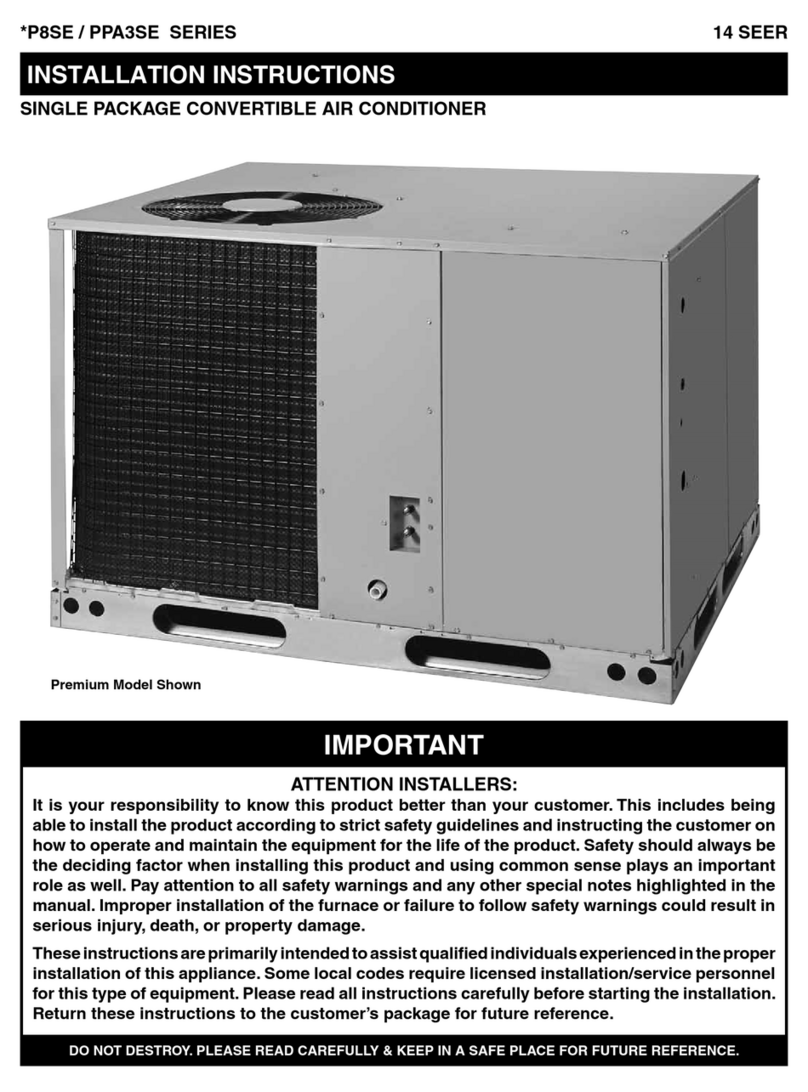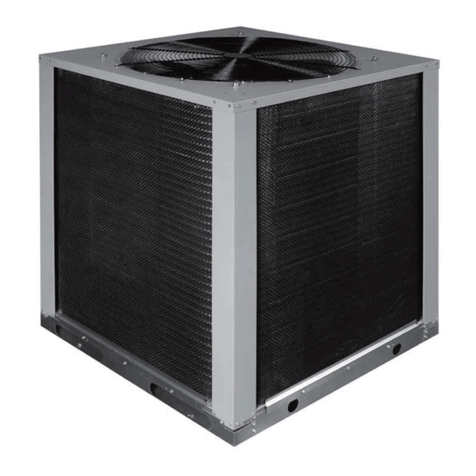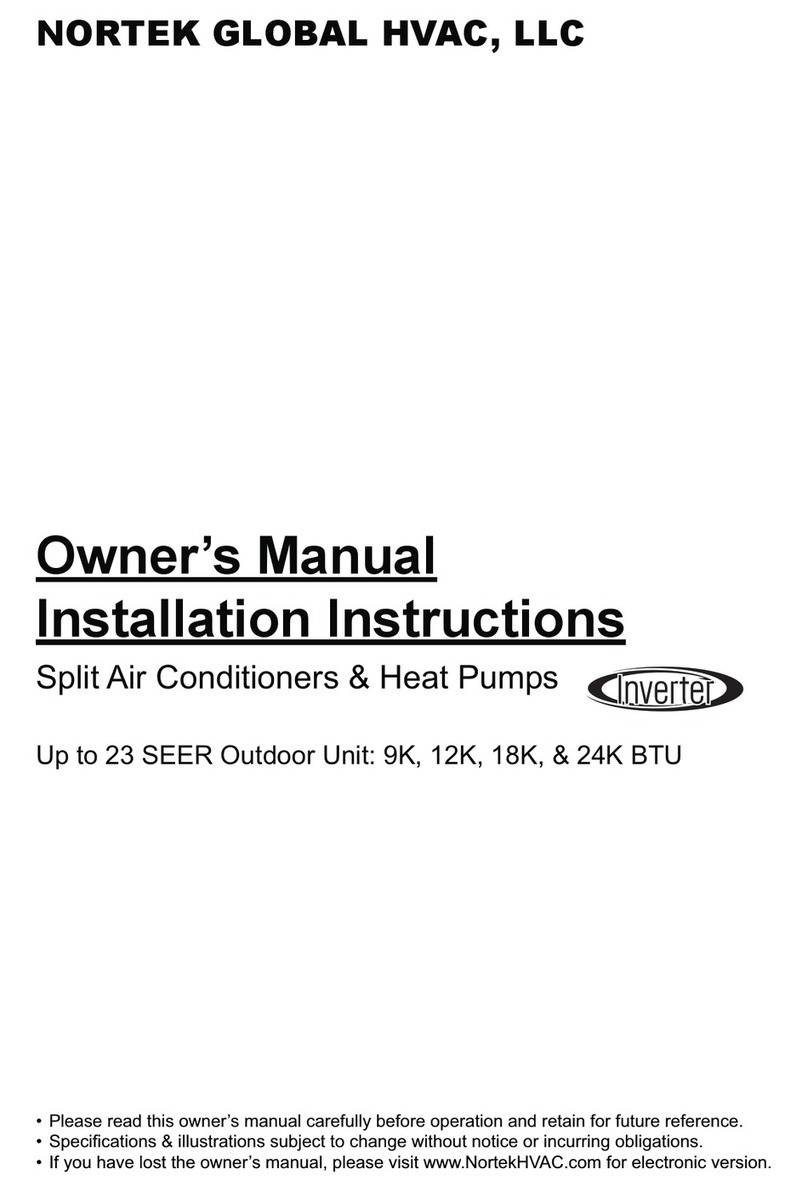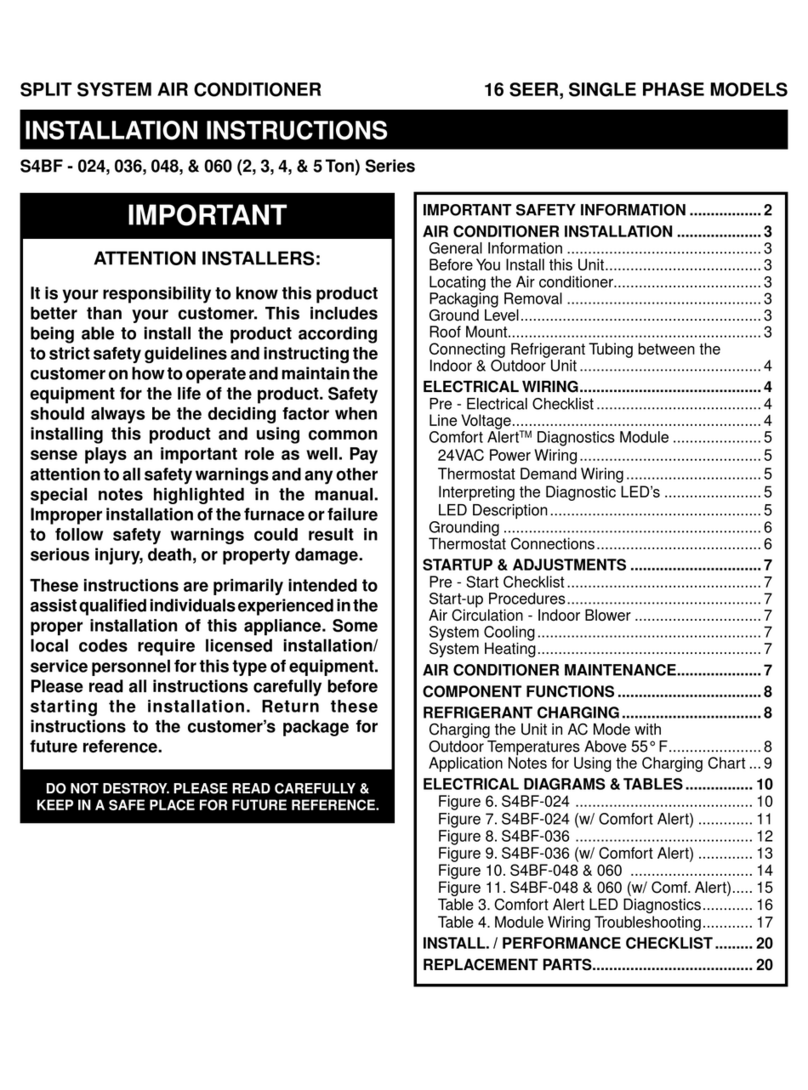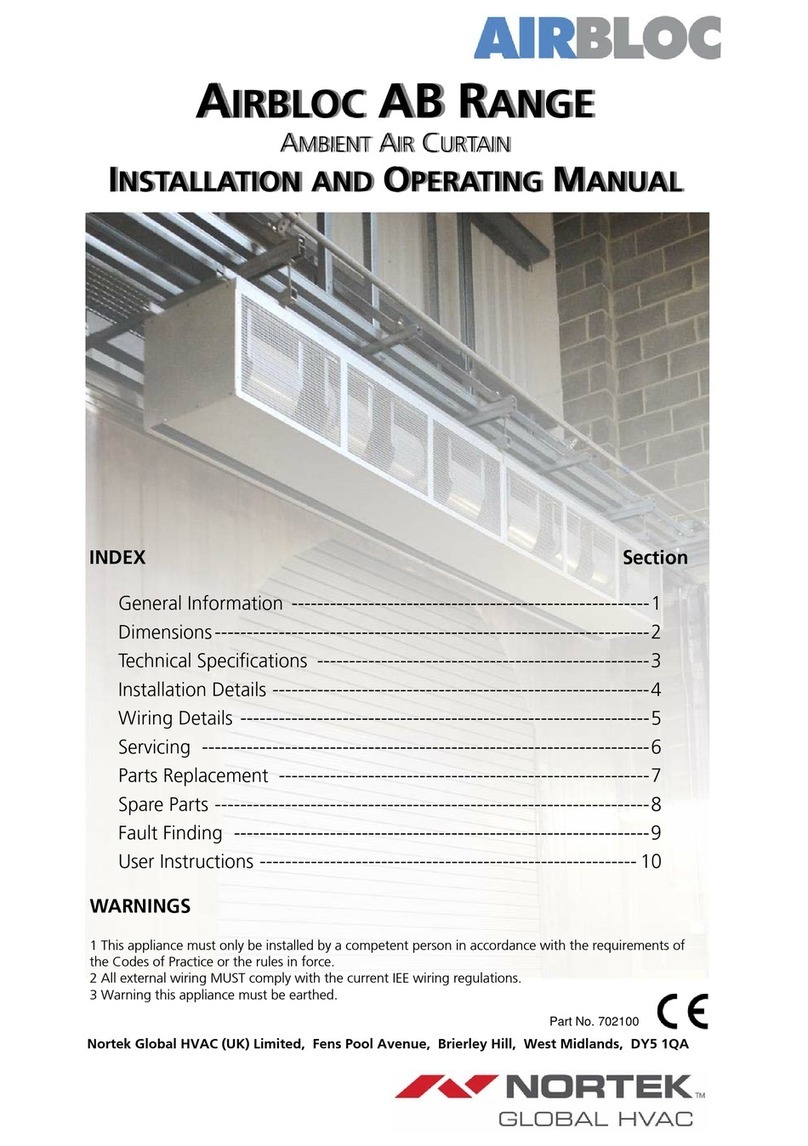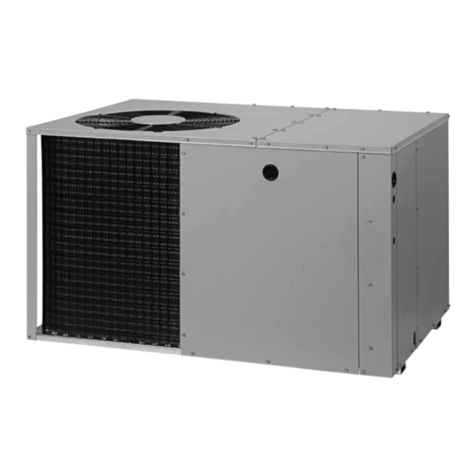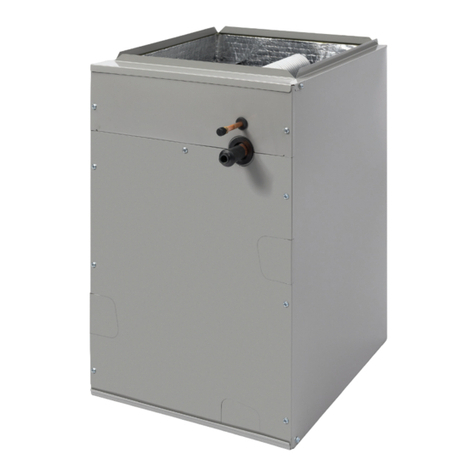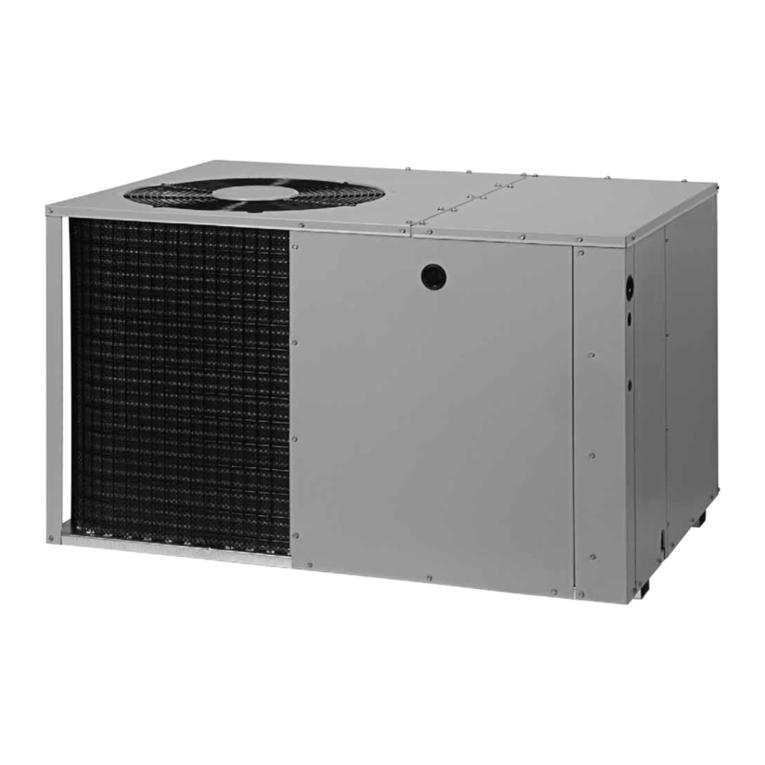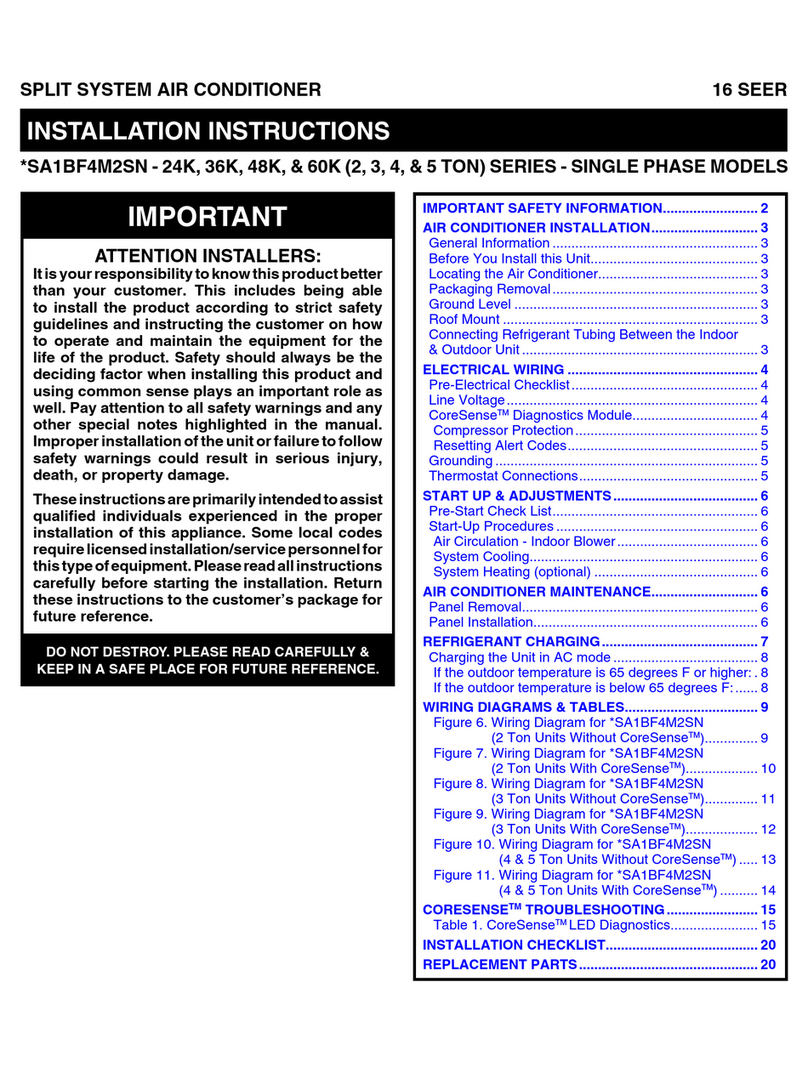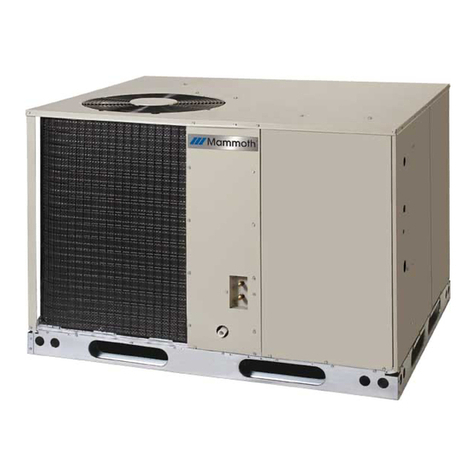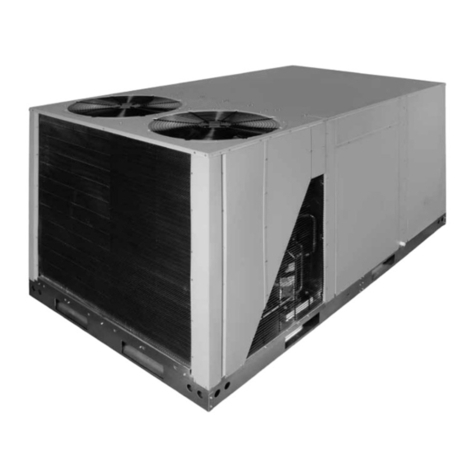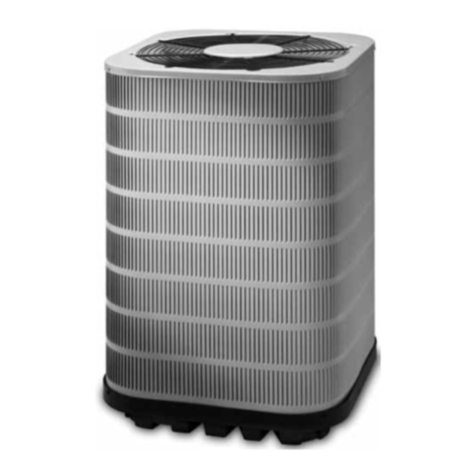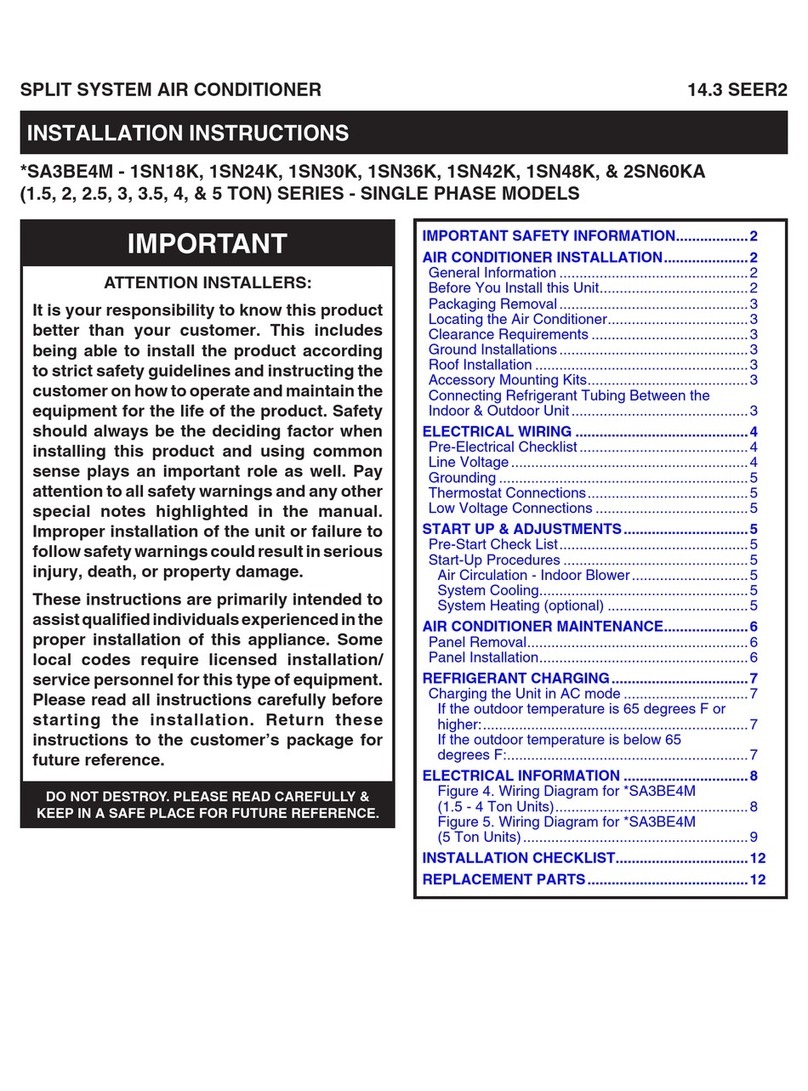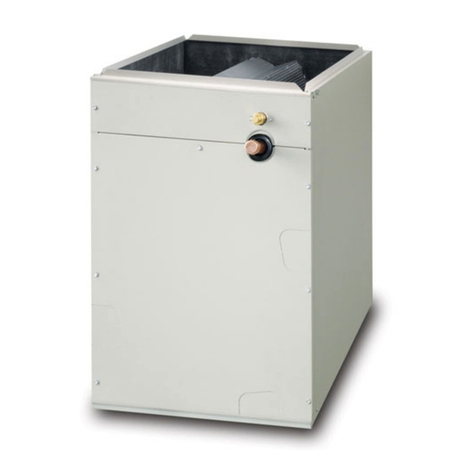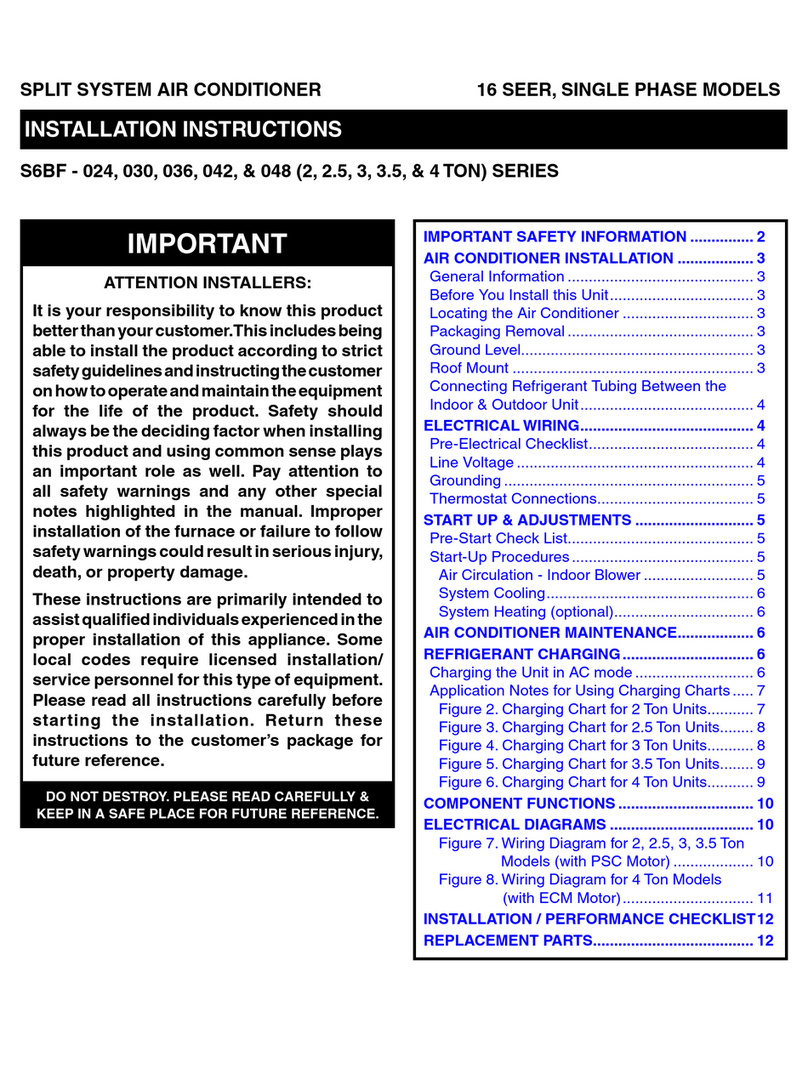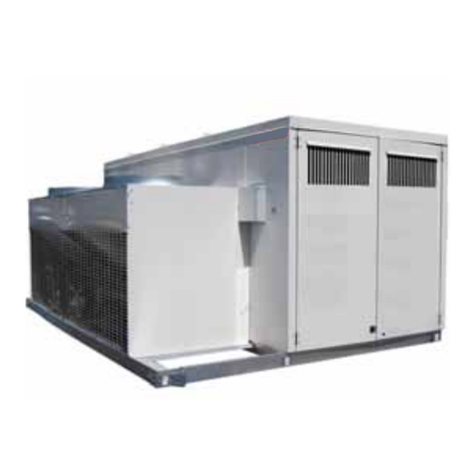
5
the equipment. Use proper code agency listed conduit and
a conduit connector for connecting the supply wires to the
unit. Use of rain tight conduit is recommended.
• 208/230 Volt units are shipped from the factory wired for
230 volt operation. For 208V operation, remove the lead
from the transformer terminal marked 240V and connect
it to the terminal marked 208V.
• Optional equipment requiring connection to the power or
control circuits must be wired in strict accordance of the
NEC (ANSI/NFPA 70), applicable local codes, and the
instructions provided with the equipment.
Grounding
WARNING:
The unit cabinet must have an uninterrupted or
unbroken electrical ground to minimize personal
injury if an electrical fault should occur. Do not
use gas piping as an electrical ground!
This unit must be electrically grounded in accordance with
local codes or, in the absence of local codes, with the National
Electrical Code (ANSI/NFPA 70) or the CSA C22.1 Electrical
Code. Use the grounding lug provided in the control box for
grounding the unit.
Comfort AlertTM Diagnostics Module
(Select Models Only)
The Comfort AlertTM Diagnostics Module (Figure 2) is a
breakthrough innovation that troubleshoots heat pump and
air conditioning system failures and accurately detects the
cause of electrical and system related failures without any
sensors. The module installs easily in the electrical box of the
outdoor unit near the compressor contactor. By monitoring
and analyzing data from the Copeland scroll compressor and
the thermostat demand, the module can accurately detect
the cause of electrical and system related failures without
any sensors. A flashing LED indicator communicates the
ALERT code and a diagnostic key is also imprinted on the
side of the module to quickly direct the technician to the root
cause of a problem.
Figure 2. Comfort AlertTM Diagnostics Module
POWER LED
(Green)
TRIP LED
(Red)
ALERT LED
(Yellow)
Key
NOTE: This module does not provide safety protection! The
Comfort AlertTM Diagnostics Module is a monitoring device
and cannot control or shut down other devices.
24 VAC Power Wiring
The Comfort AlertTM module requires a constant nominal
24 VAC power supply. The module cannot be powered by
the Cterminal on a defrost board or other control board
without experiencing nuisance alerts. NOTE: The wiring to
the module’s R& Cterminals must be routed directly from
the indoor unit or thermostat.
If the constant 24 VAC (Rwire) is not present in the outdoor
unit, use one of the spare wires in the thermostat cable to
bring power to the module. Connect the other end of the
spare wire to Rat the indoor unit or thermostat.
Thermostat Demand Wiring
The Comfort AlertTM module requires a thermostat demand
signal to operate properly. The thermostat demand signal
input (labeled Yon the module), should always be connected
to the compressor contactor coil. NOTE: When the coil is
energized, the demand signal input is 24 VAC. When the
coil is not energized, the demand signal input should be less
than 0.5 VAC.
NOTES:
• Factory installed modules have different thermostat demand
signal wiring. Always follow manufacturer wiring instructions
when replacing the module.
• After the thermostat demand signal is connected, verify
that 24 VAC across Y & C when demand is present.
Interpreting the Diagnostic LED’s
When an abnormal system condition occurs, the Comfort
AlertTM module displays the appropriate ALERT and/or TRIP
LED will flash a number of times consecutively, pause and
then repeat the process. To identify a Flash Code number,
count the number of consecutive flashes.
Each time the module powers up, the last ALERT Flash Code
that occurred prior to shut down is displayed for one minute.
The module will continue to display the LED until the condition
returns to normal or if 24 VAC power is removed from the
module. See Table 1 (page 11) for flash code identification
or Table 2 (page 12) for module wiring troubleshooting.
LED Description
• POWER LED (Green): indicates voltage is present at the
power connection of the module.
• ALERT LED (Yellow): communicates an abnormal
system condition through a unique flash code.
NOTE: The ALERT LED will flash consecutively, pause
and then repeat the process. The number of consecutive
flashes, referred to as the Flash Code, correlates to a
particular abnormal condition. Detailed descriptions of
these ALERT Flash Codes are listed in Table 1 (page
11) and Table 2 (page 12).
• TRIP LED (Red): indicates a demand signal is received
from the thermostat, but current to the compressor is not
detected by the module. The TRIP LED typically indicates
if the compressor protector is open or the compressor has
no power.
The scroll compressor’s R (run), C(common), and S(start)
wires are routed through the holes in the Comfort AlertTM
module marked R, C, & S.NOTE: The common wire does
not need to be routed through the module for it to operate.
